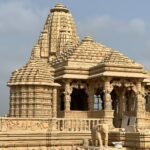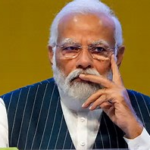
May 25, 2023
In a remarkable turn of events, the historic ceremonial sceptre, ‘Sengol,’ has emerged from obscurity to reclaim its rightful place in the annals of Indian history. Once belonging to India’s first Prime Minister, Jawaharlal Nehru, the golden sceptre was presented to symbolize the transfer of power from the British to India in August 1947. After years of uncertainty and a fortuitous chain of events, the Sengol is now set to take pride of place in the grand new building of the Indian Parliament.
The captivating journey of the Sengol begins with its disappearance from public knowledge after being showcased in the Nehru Gallery of the Allahabad Museum. For several decades, the whereabouts of this significant artifact remained unknown, until a recent series of events brought it back into the limelight.
Udhay Vummidi, the son of Vummidi Ethirajulu, a prominent figure in the creation of the Sengol, revealed the long-standing mystery surrounding its whereabouts. “We didn’t know where it was for a long time. We recovered it after a long time thanks to the media and to PM Modi. The prime minister had reached out and asked about Sengol… It was reviving our own memories,” shared Udhay Vummidi.
The efforts to locate the Sengol were catalyzed by the media’s persistent inquiries and the personal interest of Prime Minister Narendra Modi. Recognizing the historical significance of the sceptre, PM Modi expressed a keen desire to trace its whereabouts and bring it back to the forefront of public consciousness. His inquiry acted as a catalyst, prompting a dedicated search for the long-lost artifact.
Following an extensive investigation, the Sengol was eventually found and identified as the ceremonial sceptre that Nehru held during the momentous transfer of power ceremony. Its recovery evoked a sense of nostalgia among the Vummidi family, who were instrumental in its creation. The artifact’s rediscovery revived memories of their ancestors’ involvement in this historical event.
Now, as the Indian government embarks on constructing a magnificent new Parliament building, the Sengol will occupy a place of pride within its walls. This decision not only honors the historic significance of the sceptre but also symbolizes the continuity of India’s democratic values and the resilience of its people.
The return of the Sengol serves as a reminder of the journey India has undertaken since gaining independence. Its reappearance offers a unique opportunity for the nation to reflect upon its past and draw inspiration from the leaders who fought tirelessly for freedom and progress.
The retrieval of the Sengol demonstrates the power of collective efforts and the significance of preserving historical artifacts. It serves as a testament to the role of the media in raising awareness and the commitment of leaders like Prime Minister Narendra Modi to honor India’s rich heritage.
As the golden sceptre takes its place in the new Parliament building, it will undoubtedly become a symbol of India’s democratic aspirations and a reminder of the historical milestones that have shaped the nation. The Sengol’s story is a testament to the enduring power of historical artifacts to connect us with our past and inspire us to forge a brighter future.
In a world that often focuses on the present, the return of the Sengol reinforces the importance of cherishing and preserving our cultural heritage. Its resurfacing not only enriches our understanding of the past but also reinforces our commitment to safeguarding and celebrating our shared history for generations to come.










